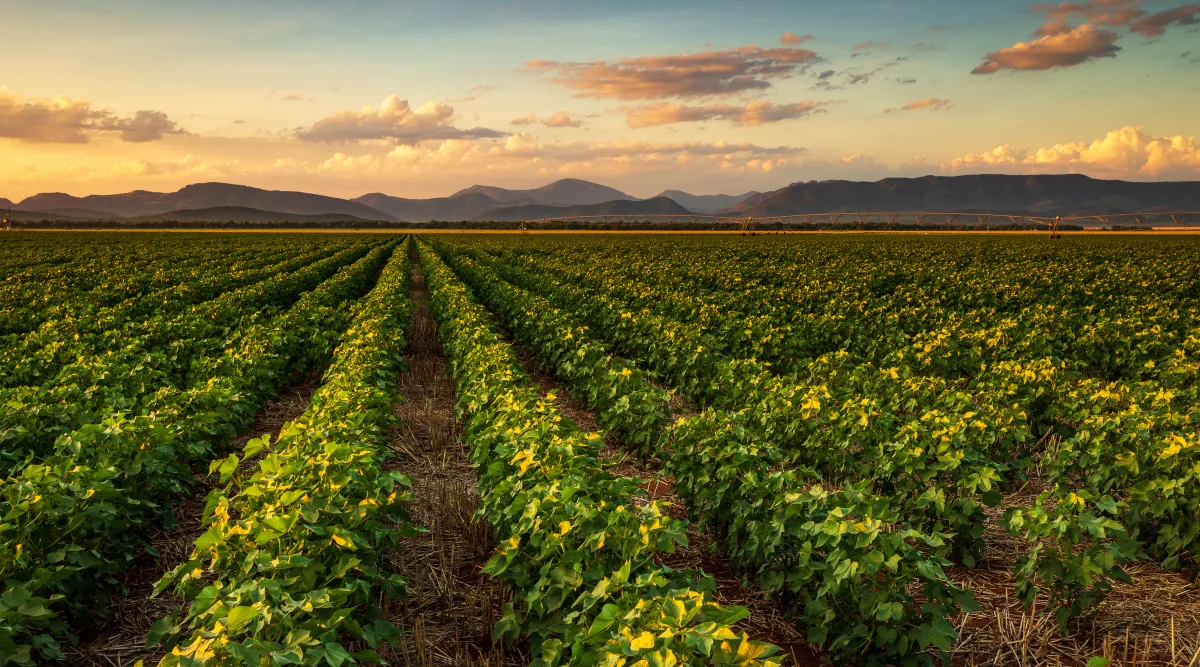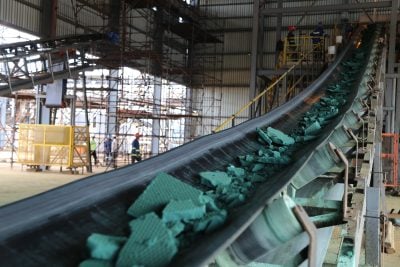Africa’s reputation as a resource-rich powerhouse is well-known. The continent is famously abundant in a wide variety of sought-after natural resources that are produced for international export, from coffee and cacao to diamonds and the rare materials that power modern smartphones and electric batteries. Can Africa’s cotton sector also become a major export revenue source for the continent and boost continental growth?
Recent trends are discouraging – Africa’s global exports of cotton products have decreased by 12% between 2017 and 2021, while its global imports, and therefore its exposure to fluctuations in global prices, have increased by 37%. Yet, if the cotton sector can overcome a set of historical challenges which have served to constrain its growth, it has substantial potential to contribute to widespread economic growth and opportunity.
In the early decades of African independence, cost inefficiencies and political interference in the management of cotton companies stifled the growth of the sector. Likewise, Africa’s leading cotton producers, the “Cotton 4” of Benin, Burkina Faso, Chad, and Mali, remain hamstrung by subsidies granted by the largest cotton trade players in the world, namely the United States, European Union, and China, which African economies are unable to compete with on even terms, an issue that has not been properly remedied despite a cotton initiative under the WTO.
However, as a new study produced by AKADEMIYA2063 and the International Food Policy Research Institute (IFPRI) shows, Africa’s cotton value chains nonetheless hold significant potential to become Africa’s next major export commodity, delivering growth, improved livelihoods, and opportunities for the continent at large.
The potential of domestic production
To transform this potential into reality for millions of Africans across the continent, governments must take a range of targeted actions to support the growth and expansion of the cotton sector.
To begin with, cotton can become the next major commodity for Africa by focusing on increased domestic production.
Despite the potential inherent in Africa’s cotton value chains, African governments must overcome the challenges of low labor productivity, a lack of technology, and other climatic challenges. For instance, cotton production has a major water footprint, at a time when Africa’s water sources are under increasing stress from climate change. Global average water use for cotton production stands at some 3,644 cubic metres per tonne, compared to other crops such as sugar (197) or vegetables (322).
African governments should therefore seek to provide further technical and financial support to smallholder farmers, boosting and climate-proofing their harvests for processing or export by equipping them with the tools, technologies, and advice needed to boost production at the farm level. This is no small feat but is a necessary first step in order to boost production to meet domestic demand, while transforming the livelihoods of millions of farmers and their communities across the continent.
Cotton as a value-added export
Secondly, Africa’s governments can also unlock cotton’s vast potential as a value-added product through a push to increase processing. Alongside boosting production to meet domestic demand, African governments must also take measures to ensure that more of the value accrued in cotton production remains on the continent. Currently, too much of Africa’s raw produce, in cotton and other materials, is exported to be processed elsewhere, representing lost value for African businesses and the communities they support.
Although ranking as some of the world’s leading producers of raw cotton, none of the “Cotton 4” count among the leading world producers of more valuable semi-processed or highly processed cotton products. Up to 60% of cotton lint produced on the continent, for example, is exported, of which only 4.5% is destined for intra-African markets.
Africa’s agrifood processing sector is therefore the “missing link” in achieving the continent’s development goals while also unlocking the potential of economic growth to contribute to improved livelihoods, particularly as the production of processed goods offer the greatest boon for economies. African governments should support greater capacity in the continent’s cotton processing sector, by addressing prevailing infrastructure constraints and skills shortages. Doing so will deliver significant returns for African communities and economies through a more sophisticated cotton value chain.
Moreover, African governments must work to further leverage continental trade agreements to unlock cotton’s vast potential as a valuable export commodity. Benin, despite being ranking among the top 10 raw cotton exporters worldwide, accounts for just 0.2% of world exports of higher value semi-processed cotton.
However, in terms of processed goods, the new study finds that Africa has the potential to export $6.2bn of cotton garments by 2026, with 15% of these exports remaining on the African continent. If achieved, this figure would place African countries, combined, above major world competitors in cotton fabric exports, including giants such as China, India, and Vietnam.
AfCFTA provides opportunity to boost cotton production
To achieve this, African governments now have an opportunity to leverage the breakthrough African Continental Free Trade Area (AfCFTA) to boost cotton production and ensure more of its value remains on the continent, where it can deliver greater economic growth and improved livelihoods for millions.
An ambitious AfCFTA, including improvement in infrastructure and disciplines on non-tariff measures, can also increase intraregional exports of cotton, along with further investment in infrastructure to boost intraregional agricultural trade, sharing benefits across the continent, beyond the main cotton producers.
African producers and exporters can benefit from large domestic or regional markets and could also facilitate exports of processed products, along with policies to strengthen the African cotton value chain.
Africa’s agricultural trade and recent initiatives implemented by African governments or external actors to support this, such as AfCFTA, the Better Cotton Initiative or Cotton Made in Africa, have significant potential to deliver widespread economic growth, food security, and improved economic opportunities throughout the continent.
African governments can take decisive steps today to unlock the full potential of its cotton sector, allowing it to play a crucial role in boosting the economic growth of the continent.
Want to continue reading? Subscribe today.
You've read all your free articles for this month! Subscribe now to enjoy full access to our content.
Digital Monthly
£8.00 / month
Receive full unlimited access to our articles, opinions, podcasts and more.
Digital Yearly
£70.00 / year
Our best value offer - save £26 and gain access to all of our digital content for an entire year!



 Sign in with Google
Sign in with Google 



